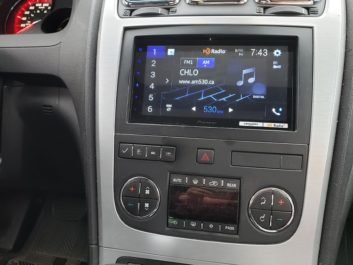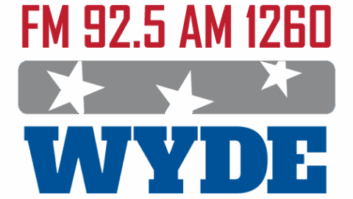
Evanov Communications recently switched on hybrid HD Radio on an AM station in Ontario. It’s believed to be the first AM to use HD Radio in Canada.
The company operates 16 radio stations across the country, including in the major markets of Winnipeg, Toronto, Montreal and Ottawa. Twelve of those are on FM, four on AM.
CHLO is in Brampton, a suburb of Toronto. The station is a Class B station broadcasting on 530 kHz with 1000W daytime operations and 250W nighttime to a non-directional antenna. Much of its programming caters to the area’s large South Asian population.
Director of IT & Engineering Paul Bury answered Radio World’s questions about it.
Radio World: What is the purpose of turning on HD Radio, is this a test, or a permanent change?
Paul Bury: We’re hoping that turning on HD will help combat the growing problems of noise and subpar audio quality that has plagued the AM broadcast band for many years.
With growing competition from FM broadcasters and online streaming, the listeners have grown accustomed to higher-fidelity audio and are slowly turning away from AM. We’re hoping that higher-quality audio will translate to higher hours tuned.
Because HD Radio on AM is new to us, we are treating it as a test at this moment. However, we hope that this will become a permanent change and a way to revitalize the historic AM band.
RW: How many cars in your market do you believe have HD Radio-capable AM receivers?
Bury: We have not seen many local stats showing a number of HD Radio-capable receivers. However, according to Xperi, there are more than 4 million HD-equipped vehicles in Canada, and one in three new cars sold in Canada every day come equipped with an HD receivers.
Over 30 auto manufacturers now ship their cars to Canada with HD decks — granted, some no longer include the AM broadcast band, but the majority still do. It’s safe to say that for the most part, if a vehicle comes equipped with FM HD, it will also have AM HD.
Since most receivers switch to HD signal automatically, we noticed with our FM HD operations that most listeners didn’t realize they were listening to the HD signal or that HD was even included in their car radio.
RW: Are you using the hybrid AM mode, or all-digital?
Bury: We are using the hybrid mode as we did not want to turn off the signal to those listeners who may not have HD-capable receivers yet. If tests in hybrid mode turn out to be positive, we will look into testing the full digital mode in certain dayparts, but as of right now, we’re not anticipating a full shutdown of our analog transmission.

RW: Hybrid on AM in the United States did not succeed, with early adopters having a lot of issues with noise and interference, especially at night. Is there cause to believe it will work now?
Bury: The interference and noise issues are highly dependent on the broadcaster’s frequency.
We have specifically chosen CHLO to be our test station because of the frequency that it uses. Being at the very bottom end of the AM dial, 530 kHz is being utilized by very few stations in North America. This means that the interference levels are very low.
During our application process with ISED, Canada’s spectrum management body, we were asked to notify stations within 500 km of us on co-channel and first-adjacent frequencies. In Canada, we found that most of these stations have either gone dark, or switched to FM or other frequencies. Other broadcasters may not be so lucky.
Our own tests do confirm that the HD signal does not cope very well with any kind of interference past the 10 mV/m contour, including that which is generated by the new, fully electric transit busses the city has started rolling out.
RW: Is it correct to say that this is Canada’s first AM IBOC station?
Bury: Yes, CHLO is the first station using IBOC technology on the AM dial in Canada. Other broadcasters, us included, have chosen to simulcast their HD stations on HD subchannels of their FM sister stations or repeaters. Even though some have investigated setting up AM IBOC operations, for their own reasons, they never did.
RW: What is the digital air chain?
Bury: The air chain consists of a 900 MHz STL feeding into a Orban 9300 workhorse audio processor for the analog portion and an Omnia One for the HD portion. We started off running both on the Orban 9300 but found that the high frequencies were not very pleasant to listen to. The combined HD and analog signal then comes out of a Nautel NX3 transmitter running at 1000W during the day, 250W at night in analog into a single-stick 740-foot antenna.
RW: What are your observations about the signal quality and coverage so far?
Bury: So far, we noticed that the HD coverage is excellent out to about the 10 mV contour in the city limits, which perfectly covers our city of license and primary target area. In the countryside and away from human-made interference, the HD receivers have a pretty solid lock out to about 5 mV. Thus far we have not received any DX reports showing lock on skywave propagation and we’re waiting patiently for those to roll in.
RW: What comments have you had from listeners?
Bury: We’ve received nothing but positive comments from our listeners, mostly praising us for the added program data. Several have noticed the higher-quality audio, saying it’s comparable to online streaming and “less muffled.” Several of our advertisers have also noticed the improved audio quality and have shared their positive feedback.
RW: A DXer board posted a complaint that the signal is “wiping out 518 kHz Navtex.” Is that the case and what if anything should be done about that?
Bury: We have not received any reports of interference to other services nor broadcasters yet, so this is the first time I am hearing about it. We will investigate all reports of interference as is required during our testing phase by ISED.
Luckily, there are many things that can be done to mitigate such interference. We can play with the power of each IBOC sideband or even turn one off if required. We have a message playing on the air asking for reports of any interference via email to [email protected]. The same address can also be used to send us reception reports.
RW: What else should we know about the project?
Bury: This has been a very exciting project for us, it was also a good learning curve to overcome. One of the challenging parts to the project was alignment of audio processing so that the switch from digital to analog in the weak reception areas is not too shocking to the ears. This is still a work in progress but we’re already seeing great results.







